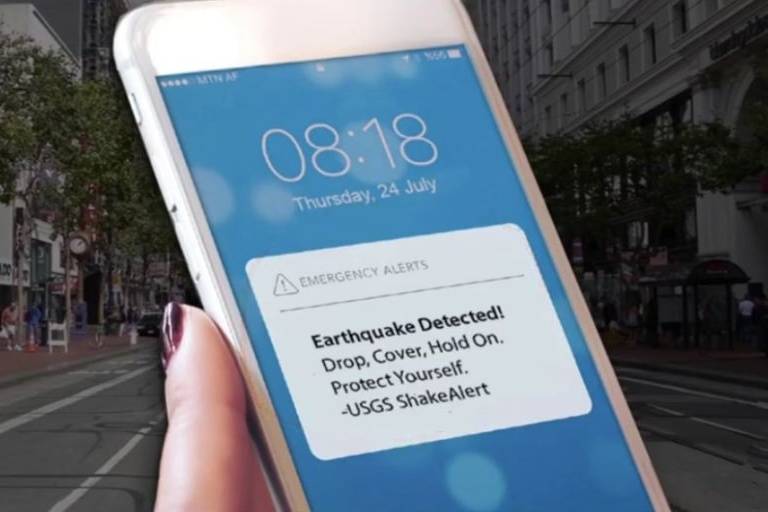Washington state will have its own earthquake early warning system on May 4 when ShakeAlert goes live, which could give residents precious seconds to prepare before the ground begins to shake.
The system is operated by the U.S. Geological Survey in partnership with the Pacific Northwest Seismic Network, and can quickly alert people of an impending earthquake. The alert system quickly detects earthquakes, including an estimate of the earthquake’s size and location, and delivers alerts to mobile phones. The warning system will mean Washington has joined both Oregon and California in having a warning system.
Android phone users can receive notifications through both the Wireless Emergency Alerts and through their phone’s built-in software, which doesn’t require a specific app. However, the alerts will only be received if the device’s location setting is on, and Earthquake Alerts is enabled in their location settings, according to the Washington Military Department.
The majority of injuries in earthquakes are caused by people falling down or being hit by falling objects. While the alerts don’t provide much time to take cover — it can be anywhere from seconds to tens of seconds, depending on where the earthquake strikes — it could be enough to allow people to find shelter. The alert can also give trains and planes on the runway enough time to begin slowing, and prevent cars from entering bridges and tunnels.
“Taking such actions before shaking starts can reduce damage and casualties during an earthquake,” according to the ShakeAlert website. “It can also prevent cascading failures in the aftermath of an event.”
Earthquakes are common on the West Coast. The Snoqualmie Valley experienced a magnitude 2.5 earthquake as recently as April 28. While small shakes like this can go unnoticed, and are unlikely to cause damage, large shakes have happened in recent memory — and larger ones are expected.
In 2001, the Nisqually earthquake struck Washington state. The 6.8 magnitude quake caused between $1 billion and $4 billion in damages. Then there’s The Big One, the name given to an expected 9.0 magnitude earthquake. While it’s unknown when this earthquake will strike, it’s expected to cause widespread damage and a tsunami that will strike Washington’s coastline. According to a 2018 Seattle Weekly article, experts predicted a 14% chance that a large Cascadia Subduction Zone earthquake would occur within the next 50 years.
The last known subduction earthquake was in 1700, and sent massive tsunamis ripping across the Pacific Ocean, striking the Pacific Northwest and Japan. Geological records indicate that these earthquakes strike roughly every 400 to 600 years.


